JANUARY 23, 2024: Mark and I spent two days in Los Angeles, hardly enough time to visit the many Jewish Heritage sites in the city – especially when much of our time was busy visiting relatives.
Today, with over 560,000 Jewish individuals, Los Angeles has the second largest Jewish population outside of Israel (the first being New York). The Jewish history of LA runs parallel to the general history of the city. The first Jews arrived with the Gold Rush, then came a wave of immigrants, many who became involved with the film industry. It is said that the Jews made Hollywood and Hollywood made LA.
Most of the major film studios were founded by Jewish immigrants – Adolph Zuckor from Hungary, was one of the three founders of Paramount Pictures. William Fox, also from Hungary, founded Fox Film Corporation. Metro-Goldwyn-Mayer (MGM) was co-founded by Louis B. Mayer, born in Russia and Marcus Loew, whose parents came from Austria. Warner Brothers was founded by Harry, Albert and Sam Warner, who were born in Poland, and Jack Warner, who was born in Canada. Carl Laemmle, one of the founders of Universal Pictures was from Germany, and Harry and Jack Cohn, together with Joe Brandt, were three Jews from New York, who founded Columbia.
Not only did Jews found many of the film studios, but they were also involved in all facets of the industry, as executives and producers, and also in creative roles like directors, writers, and performers.
Despite this huge influence of the Jews on the entertainment industry, today there does not seem to be anything that commemorates their great contribution. Almost all the movie studies have moved to new locations and today are owned by corporations. You can go on studio tours (which unfortunately we did not have time for), but I would guess that their Jewish connection is not highlighted. A few movie theaters, originally built by Jews, still stand, such as the Chinese Theater, but their origins are not commemorated.
For Wandering Jew, we found that one place where vestiges of the Jewish contribution to the film industry still lie (figuratively and literally) is the Home of Peace Memorial Park and Mortuary. In the Wikipedia article about this oldest existing Jewish cemetery in LA, are listed several dozen notables that are buried there. In this list, you can see the prevalence of the various roles in the entertainment industry.
Mark and I selected several names from this list and drove to the Home of Peace Memorial Park. Upon driving through the gates, you see beautifully maintained grounds, full of green lawns, manicured trees, and of course, as everywhere in LA, many palms. In the distance, was a large Moorish style building – the mausoleum. Our aim was to find the resting place of the notable people we had selected from the Wiki list.
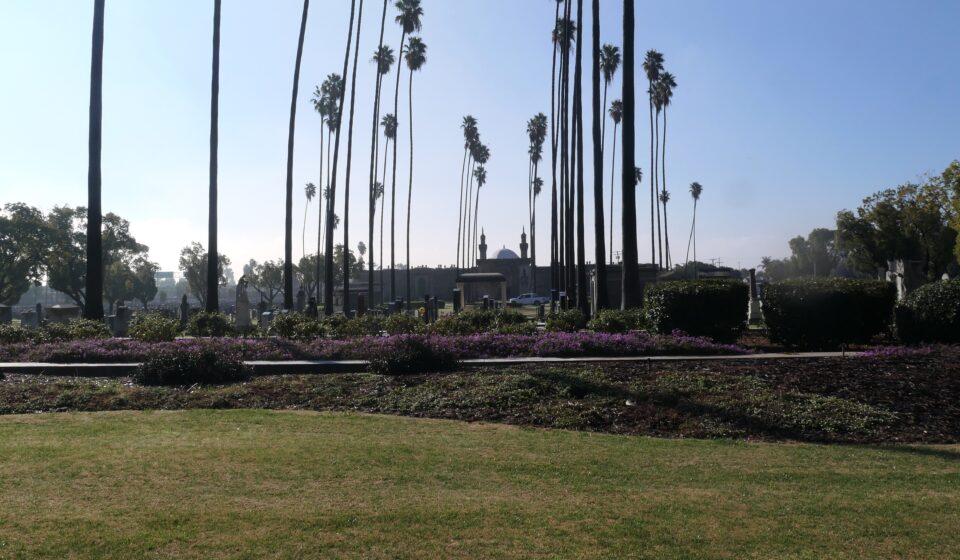
The cemetery is laid out in sections. In the middle, between the entrance gate and the large mausoleum in the distance, is a grassy area with spread out graves and several personal mausoleums. This area apparently holds the choice spots. On both sides of this middle area and continuing along the sides and back of the large mausoleum, are the majority of graves. Here thousands of tombstones are lined in rows, one gravesite next to the other. Today over 26,000 people are interred here.
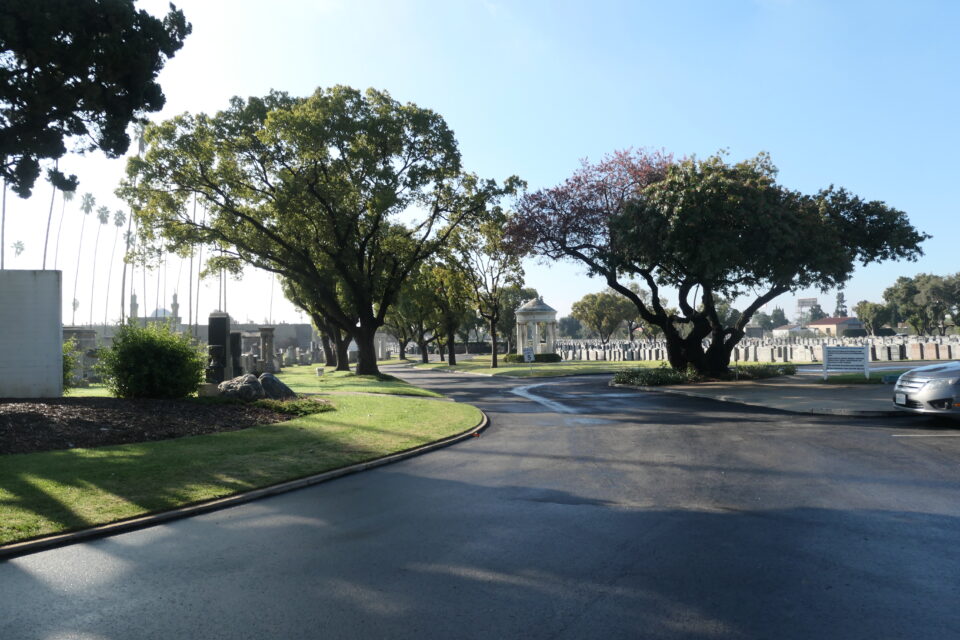
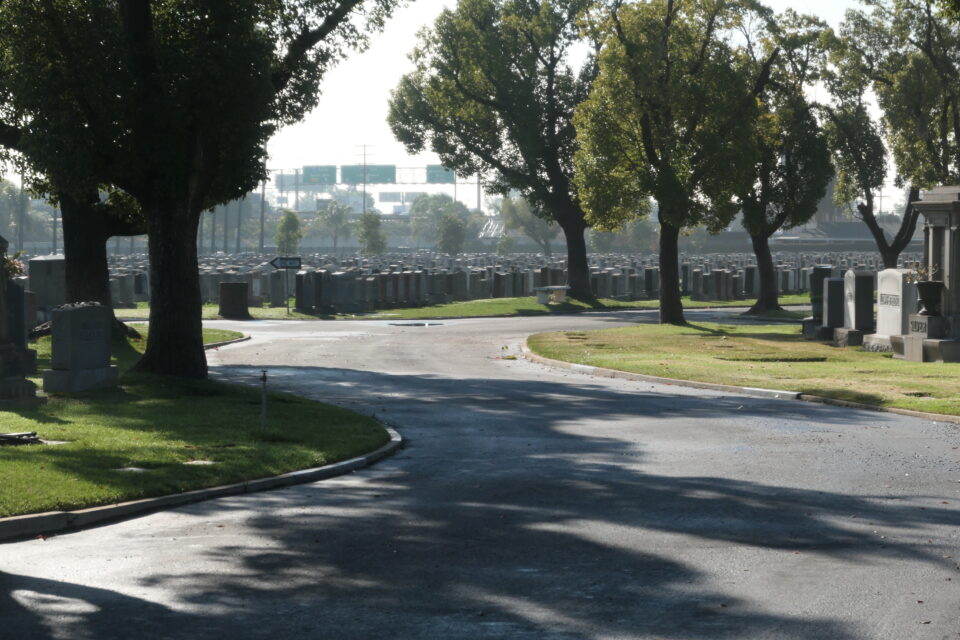
To find the people on our list, we used Find-a-Grave, a mobile app that helps to locate a specific tombstone within a cemetery. Although not perfect, it did a good job of steering us in the right direction for the people we were looking for.
The first name on our list was the Warner brothers. They were easy to locate, having a family mausoleum with the Warner name right in front of the main mausoleum building. The Warner family was involved in the distribution of films from as early as 1905, and in 1923 Warner Bros. Pictures was formally incorporated. Their film “The Jazz Singer” starring Al Jolson signaled the beginning of the era of “talking pictures”. In 1929, they released the first all-color, all-talking feature, causing a color revolution. The more I learned about what they achieved, the more admiring I became of their work and the innovation it displayed.

After paying our respects to the Warners, we entered the main mausoleum. Although not impressive from the outside, inside this was a place that commanded respect. The entrance hall, like everything else, was all marble, with a large Jewish star on the floor. The Jewish star was a motif that was often found in the building, in the stained glass windows or decorating the walls and ceilings. Upon entering, directly in front of us, was a small chapel. I imagine the who’s who of Hollywood attended funerals there.
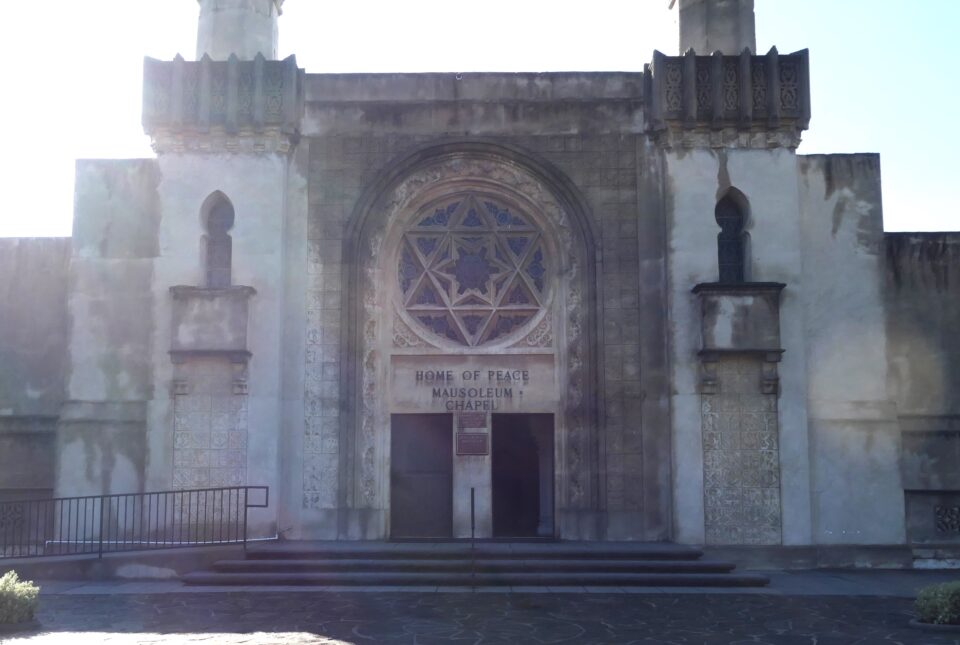

The building was comprised of many hallways – with names like the Corridor of Harmony, Corridor of Immortality, Corridor of Truth and so on. The size of the building was overwhelming – our map showed it has 12 long, narrow corridors. In each corridor, on both sides, were the mausoleum crypts, often stacked six to seven one above the other from floor to ceiling. Each crypt had a plaque with a name, and many had two small metal vases on each side of the plaque to hold flowers. Many held artificial flowers, but some even had fresh bouquets. Most corridors had a beautiful stained-glass window while others, stained glass ceilings. This was a truly a place of reverence.
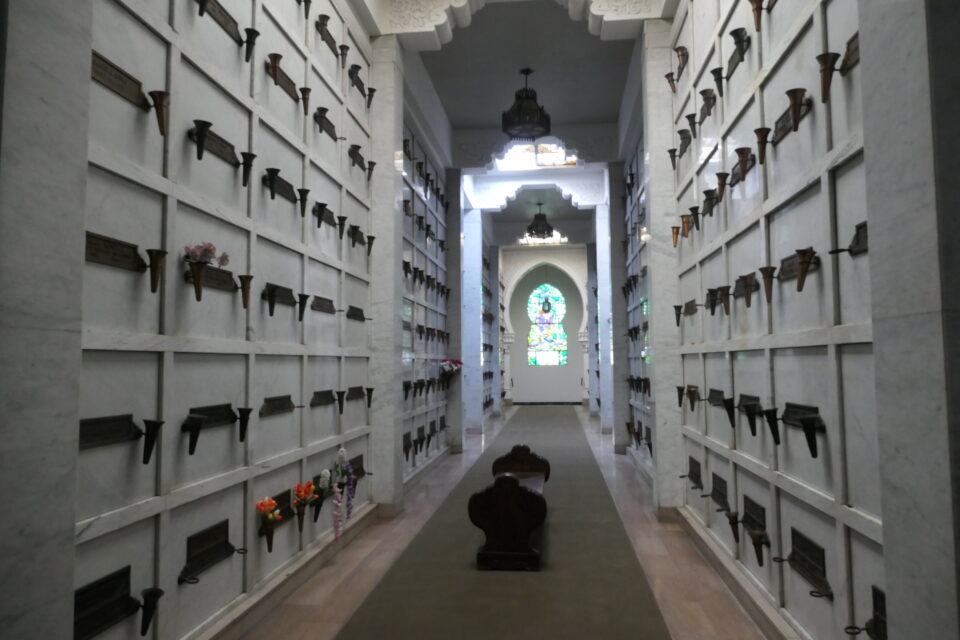
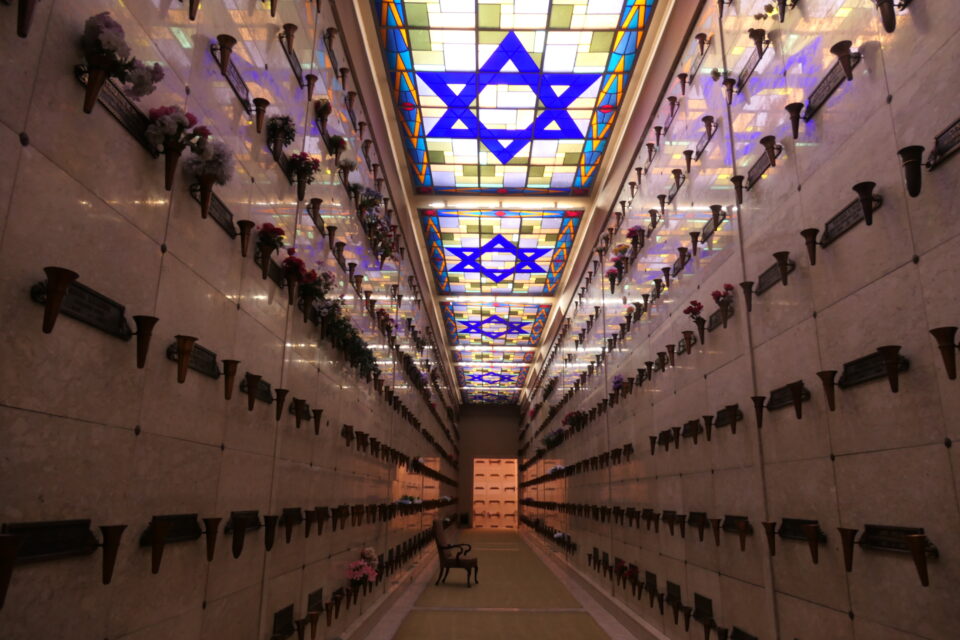

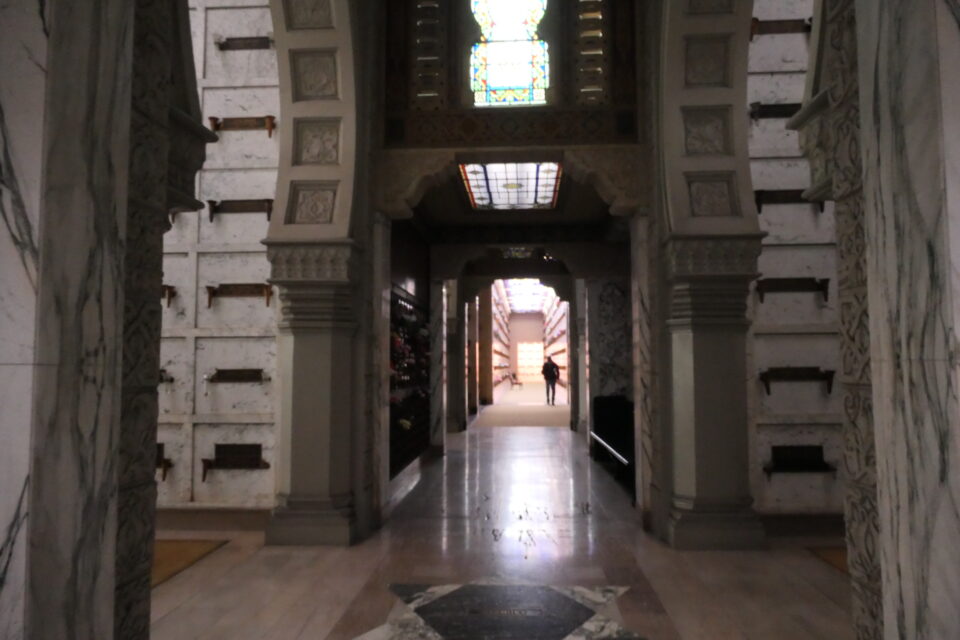
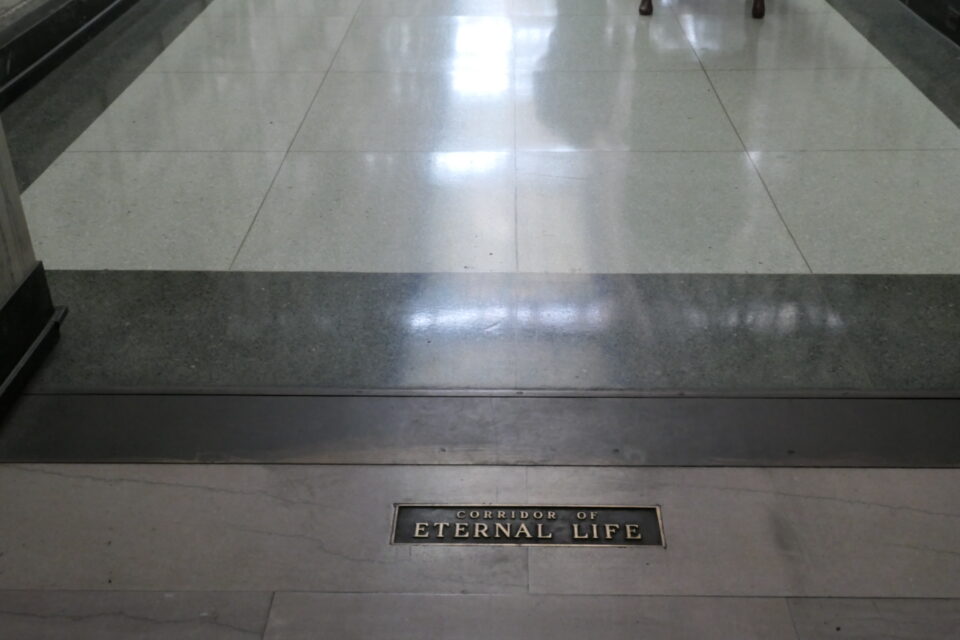
We were looking for the Corridor of Love, that held the crypt of Carl Laemmle, a co-founder of Universal Studios. At the end of the corridor, we found the Laemmles. This was a small separate room containing several crypts of the Laemmle family, including Carl.

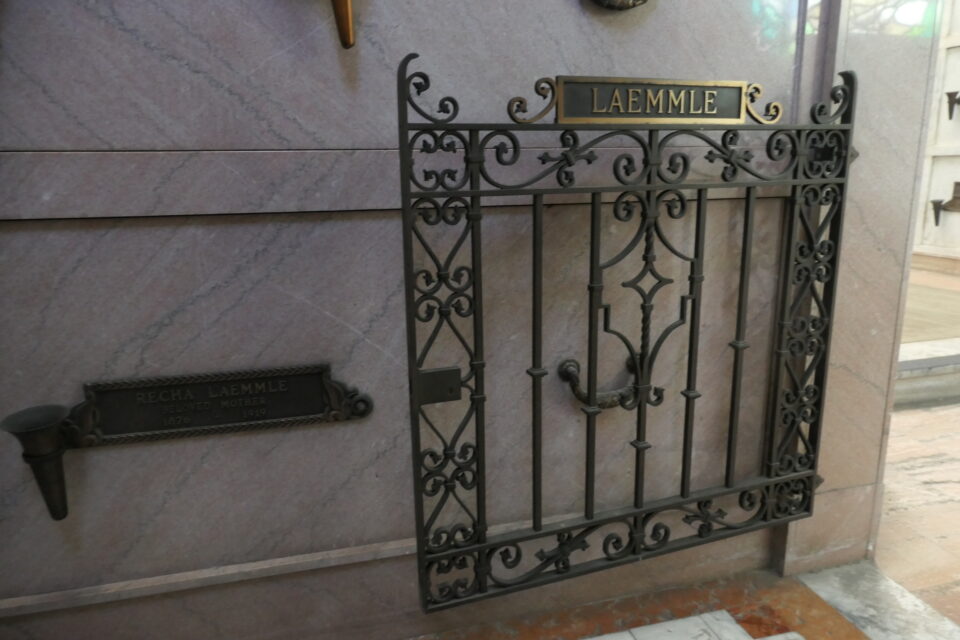
From there, we navigated to the Corridor of Eternal Life, looking for the crypt of Shemp Howard, an actor who achieved fame, along with his brothers, as members of the “Three Stooges” comedy team. The Three Stooges was a popular TV show that I remember from my childhood. Once in the correct hallway, Shemp’s crypt was easy to locate. It was covered with many stones and flowers left by visitors, and someone had even taped a photo of Shemp near his plaque. A chair was placed in front of his crypt, and I imagined an old admirer had sat there paying his respects.
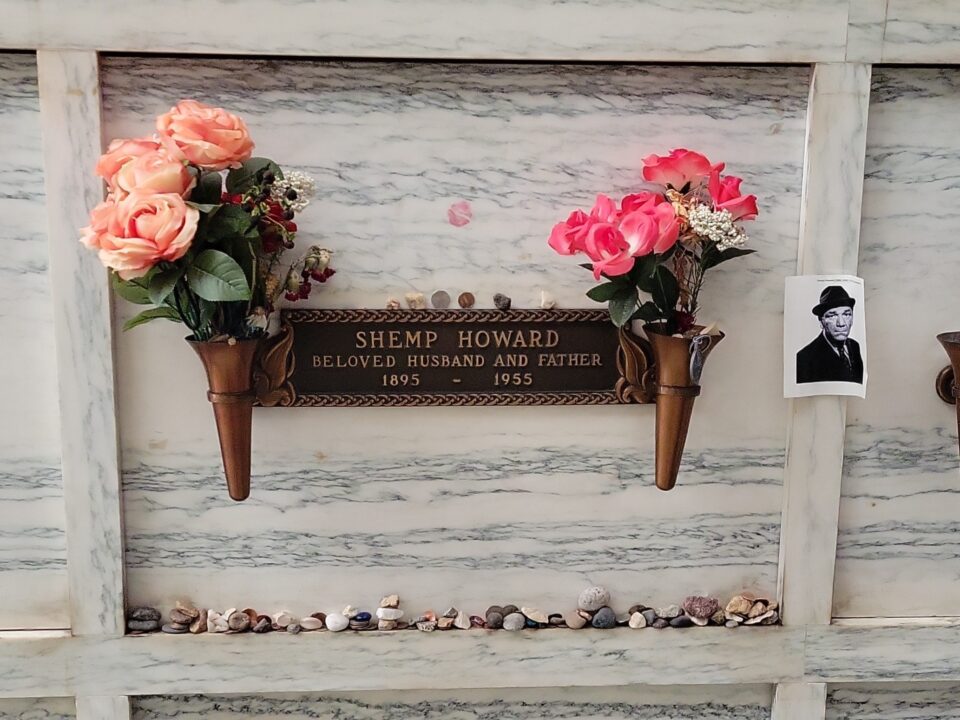

Finding the grave of Shemp Howard’s younger brother Jerome Howard, better known as “Curly”, was not as easy. He passed away several years before Shemp, and was buried not in the mausoleum, but in one of the many rows of graves outside. The Find-a-Grave app brought us to the right section, but with the hundreds of graves there, it took some time to find. Once we located the grave, we saw that it too was covered with stones and flowers placed by visitors.
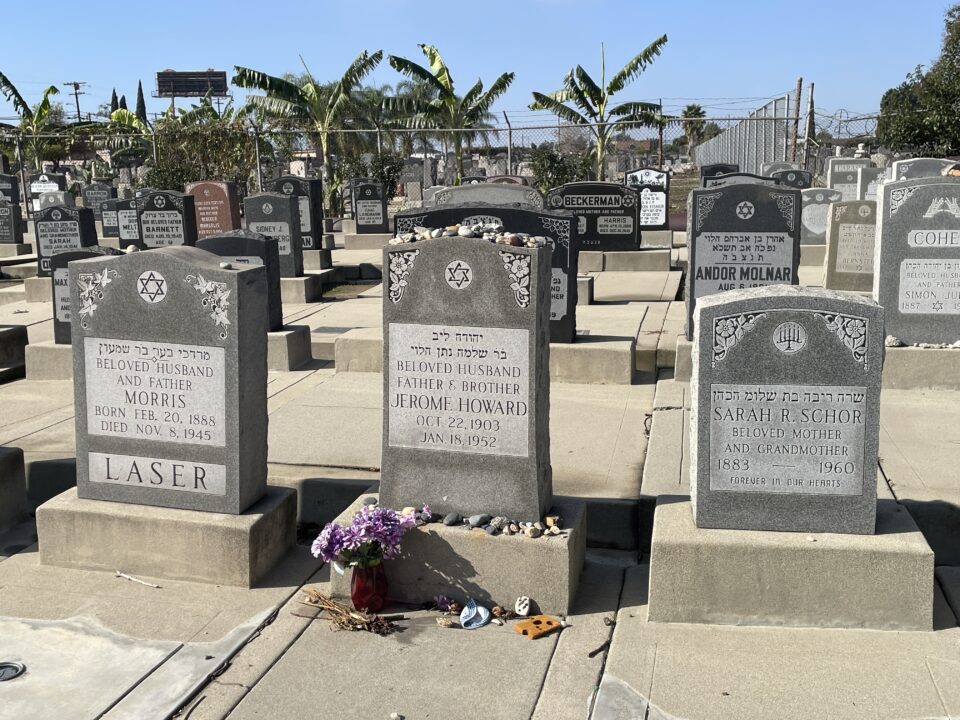
Many people go find the celebrity stars on the famous Hollywood Walk of Fame; we instead chose to find their final resting place.
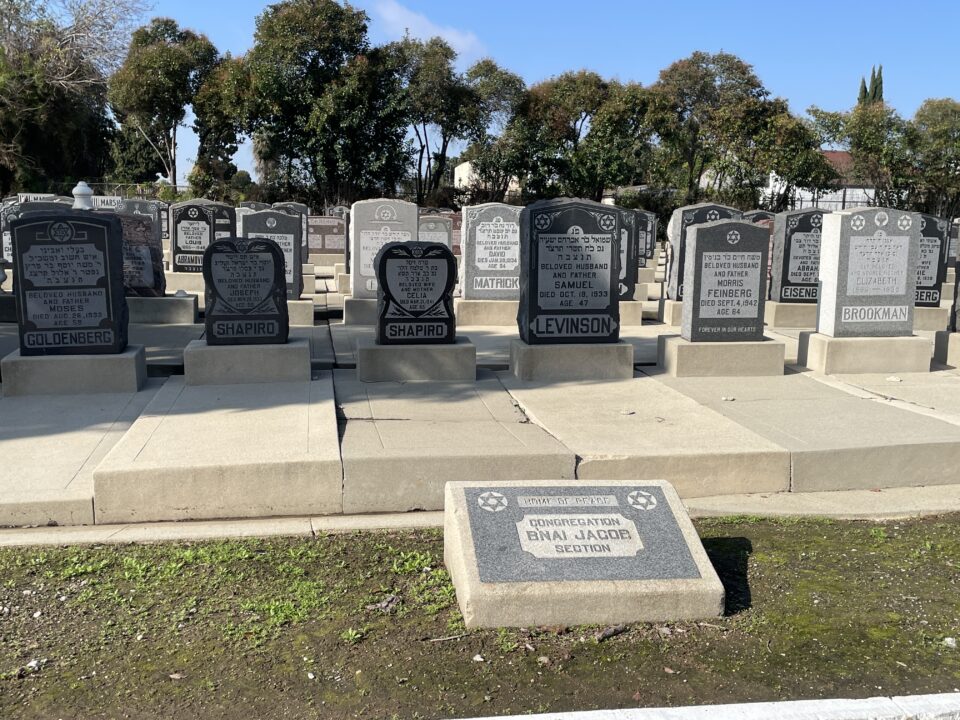
While returning to the entrance gate, we passed the large personal mausoleum of Rabbi Edgar Magnin. Known as the “rabbi to the stars”, he served for 70 years as the rabbi of the Wilshire Boulevard Temple. We would learn much more about him, when we visited his synagogue the following day.
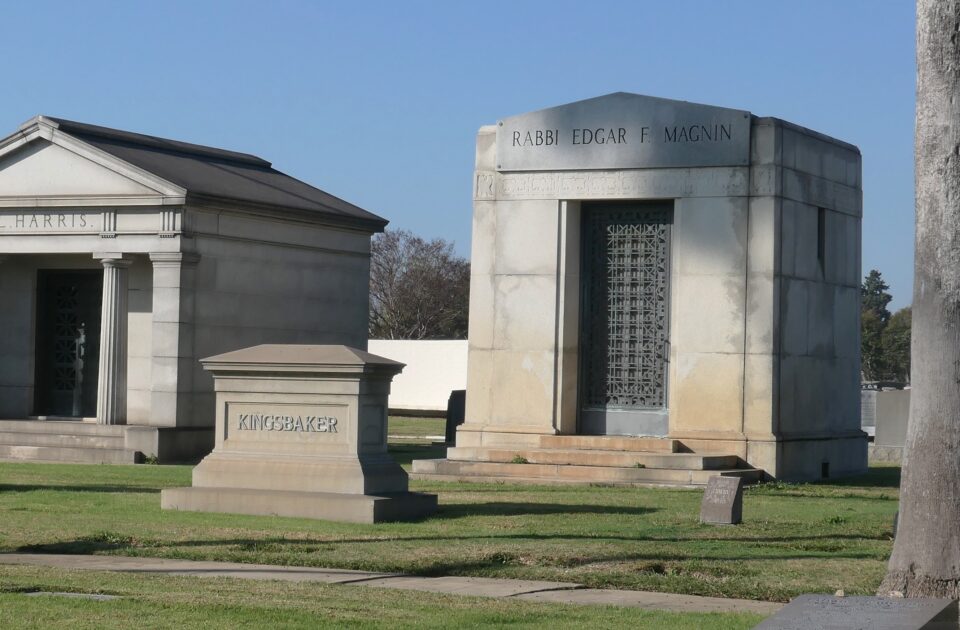
Near his mausoleum, the workers were preparing the ground for a new burial. The cemetery is still in use today.
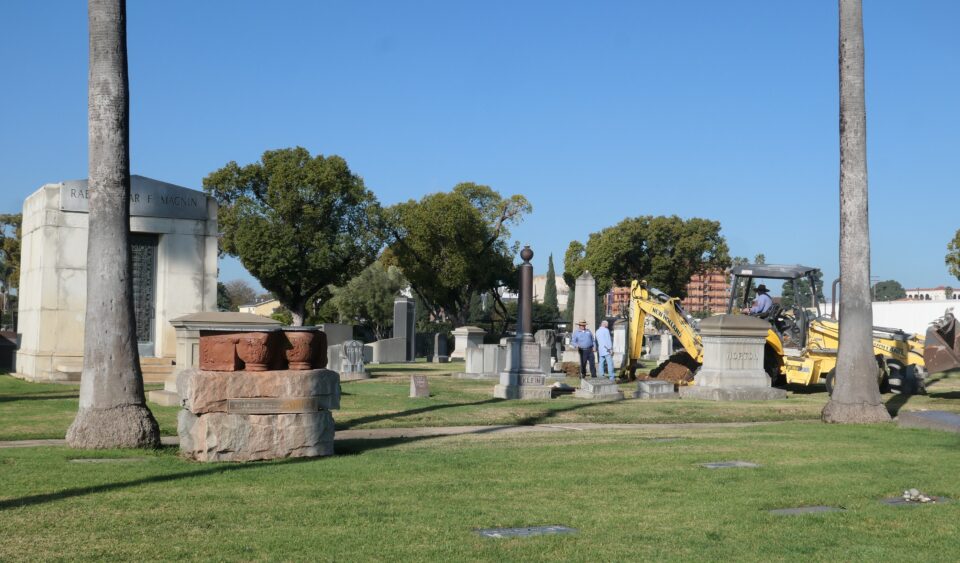
Before leaving the cemetery, there was one more grave on our list that I wanted to locate – the grave of Ruth Harriet Louise. I had randomly chosen a name I did not know from the list of notables buried at the House of Peace and added it to our list of whom to visit. Turns out that Ruth’s story is both remarkable and tragic. She was born in 1903 in New York, the daughter of a rabbi. In 1922, she began working as a portrait photographer. In 1925, at the age of 22, she moved to California and opened her own studio. That same year she was hired by MGM as chief portrait photographer and was the only woman working as a portrait photographer among all the Hollywood studios. During her five-year career at MGM, she took over 100,000 photos, that included portraits of stars like Greta Garbo and Joan Crawford.
She married the writer and director Leigh Jason in 1927. In 1932, she gave birth to a son, Leigh Jason Jr., who died of leukemia when he was six years old. Two years later, in 1940, she died, along with her second son, of complications during childbirth. She was buried together with her two sons not far from the entrance to the Home of Peace Memorial Park.
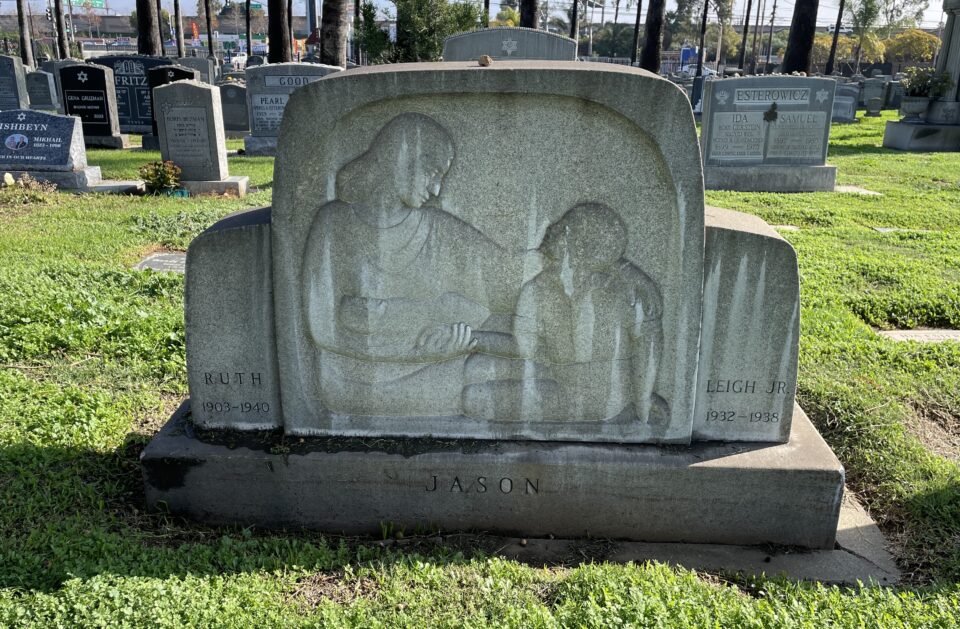
After paying our respects to Ruth Louise, we drove to the Breed Street Shul in Boyle Heights.
Throughout the 1920s and ’30s, about forty percent of the population in Boyle Heights was Jewish. This was the community with the highest concentration of Jewish people west of the Mississippi. In addition to these Eastern European Jews, the area attracted people of many other nationalities: Italians, Russians, Germans, Armenians, Japanese, African Americans, and Mexican Americans – each adding to the cultural diversity of this historical immigrant neighborhood.
The core of the community was then Brooklyn Avenue, which hosted dozens of Jewish-owned businesses, including the original Canter’s Deli. As the Jews established themselves, they moved westward in LA and today Boyle Heights is primarily a Latino neighborhood. Brooklyn Avenue was renamed to Cesar E. Chavez Avenue.
Unlike NY’s Lower East Side, where some vestiges of the strong Jewish connection to the neighborhood remain (today you can still buy bialys, knishes and pickles from a barrel there), in Boyle Heights aside from the building of the Breed Street Shul, there does not seem to be any remains of the vibrant Jewish community that once lived there.
Today the Breed Street Shul is closed, and the nonprofit Breed Street Shul Project, Inc., which was established in 1999, collects funds to rehabilitate it. This shul was once one of more than 30 synagogues that used to exist in the neighborhood.
We parked in front of the synagogue. Now it is not a very welcoming place – stepping out of the car, I needed to skip over much garbage to reach the sidewalk. The shul building is surrounded by a tall wire fence.
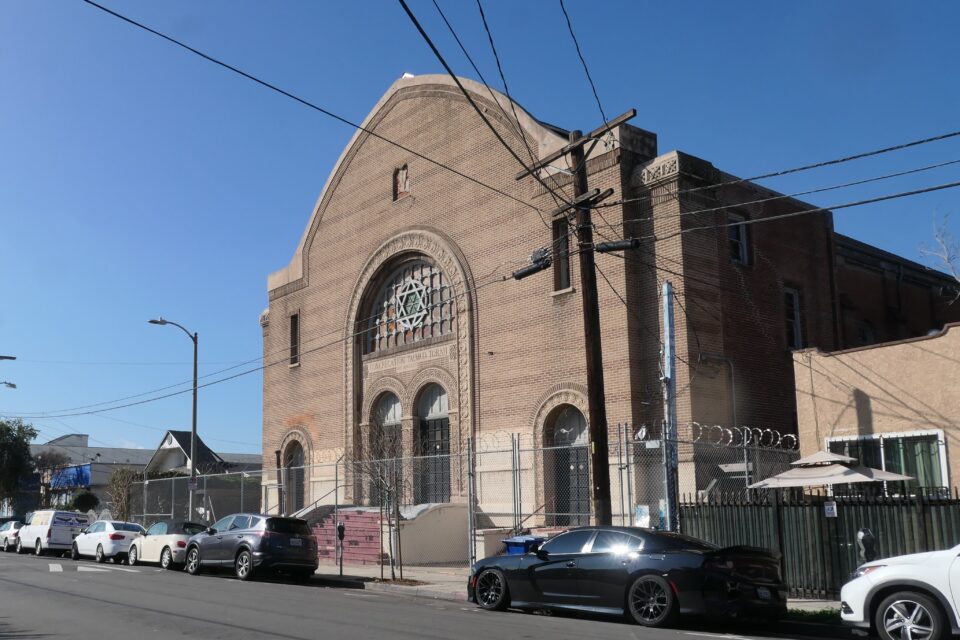
The Shul’s orthodox congregation, also known as Congregation Talmud Torah, was first established in 1904. They dedicated this building in 1923. By the 1980’s the building suffered from disrepair, neglect and vandalism. In 1987, severe earthquake damage caused it to be closed and it was in danger of being demolished. In 1988, it was designated a City of Los Angeles Historical-Cultural Monument and is still awaiting restoration.
Near the shul, the City of Los Angeles erected a historical marker detailing this history of the synagogue. The historical marker included a photo of the once impressive interior, showing the bimah and the hand-painted walls.
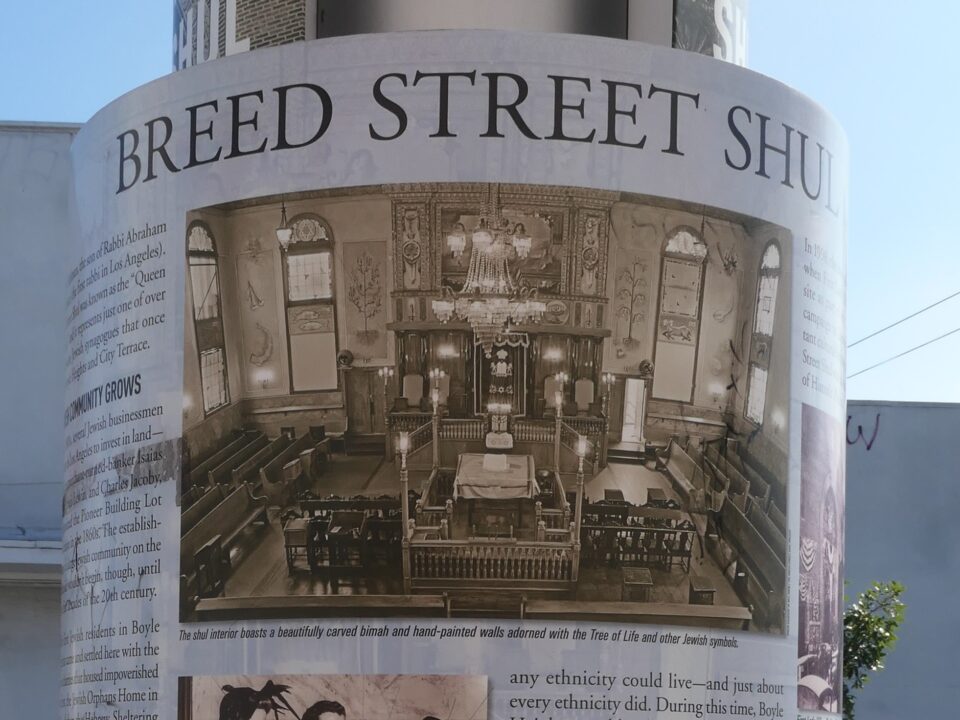
From there, we walked to the nearby corner of what was once Brooklyn Avenue and Soto, where there is an additional historical marker, this one detailing the story of the neighborhood. Surrounded by garbage, and scrawled with graffiti, I wondered if anyone ever paid any attention to the sign.
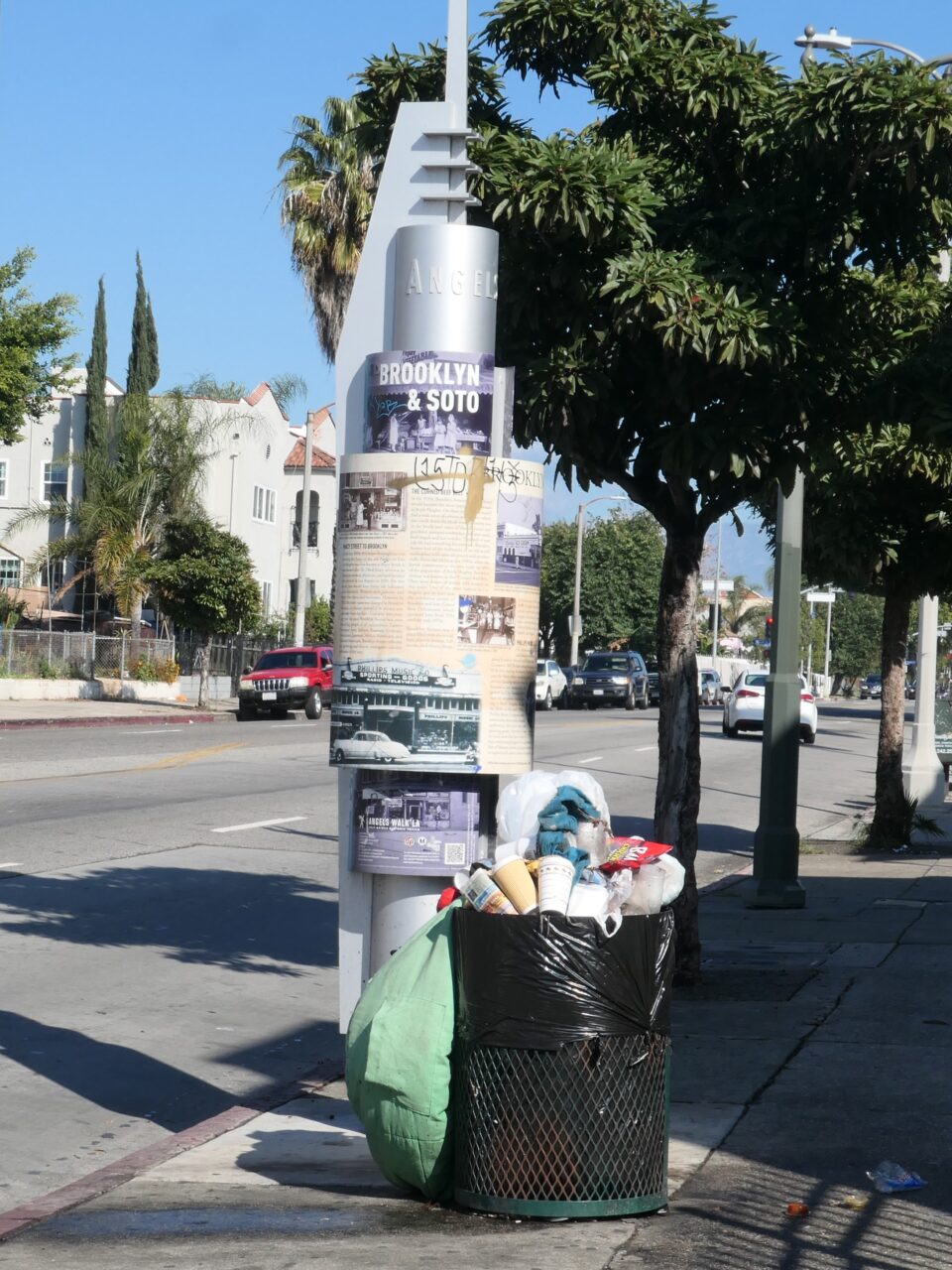
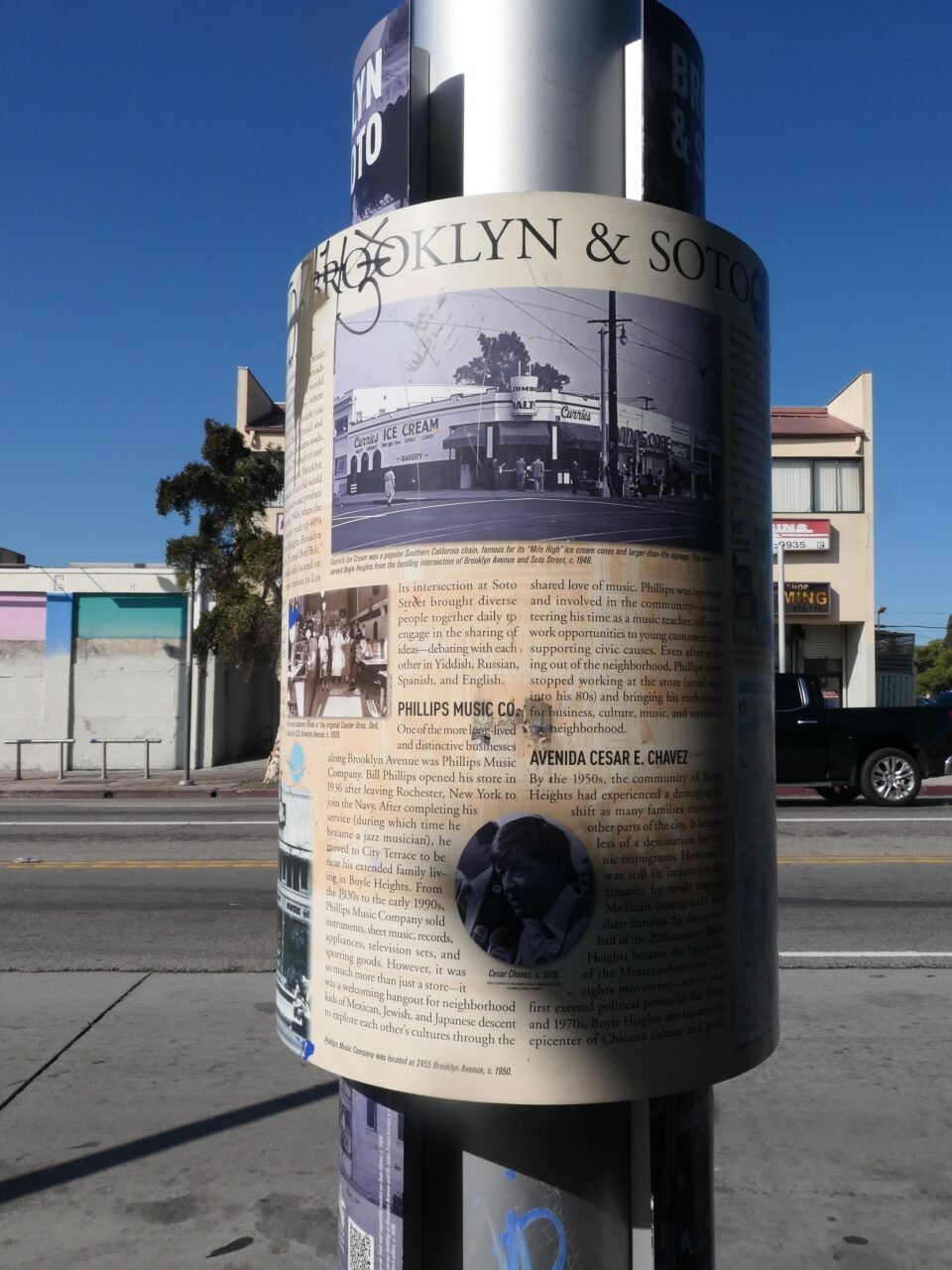
Along with the 12 Jewish delis on Brooklyn Avenue, the historical marker mentions the Philips Music Company. Located previously at 2455 Brooklyn Avenue, the store was run by musician William “Bill” Phillips, who was born in 1910 as William Isaacs. The Philips Music Company wasn’t simply a place to buy instruments and check out the latest vinyl records, but also a welcoming place for neighborhood kids to explore each other’s cultures through a shared love of music.
As we returned to the car, we saw a small group of people peering through the wire fence obviously interested in the shul. Upon talking to them, we learned that, just like us, all their efforts to contact people from the Breed Street Shul Project to request a tour of the building went unanswered. It made me wonder if the restoration effort is still happening.
Our next off-the-beaten-path place to visit is known as The First Jewish Site in LA. In 1854, the tiny Jewish community of Los Angeles established the Hebrew Benevolent Society, the area’s first charitable organization. The organization began by purchasing land for a Jewish cemetery. This was in an area not far from where Dodger’s stadium is located today. In 1902, all the graves from this cemetery were moved to Home of Peace Memorial Park, and today nothing is left except a plaque to commemorate the location. As we discovered, the plaque is no longer there – just the stone it once stood on.
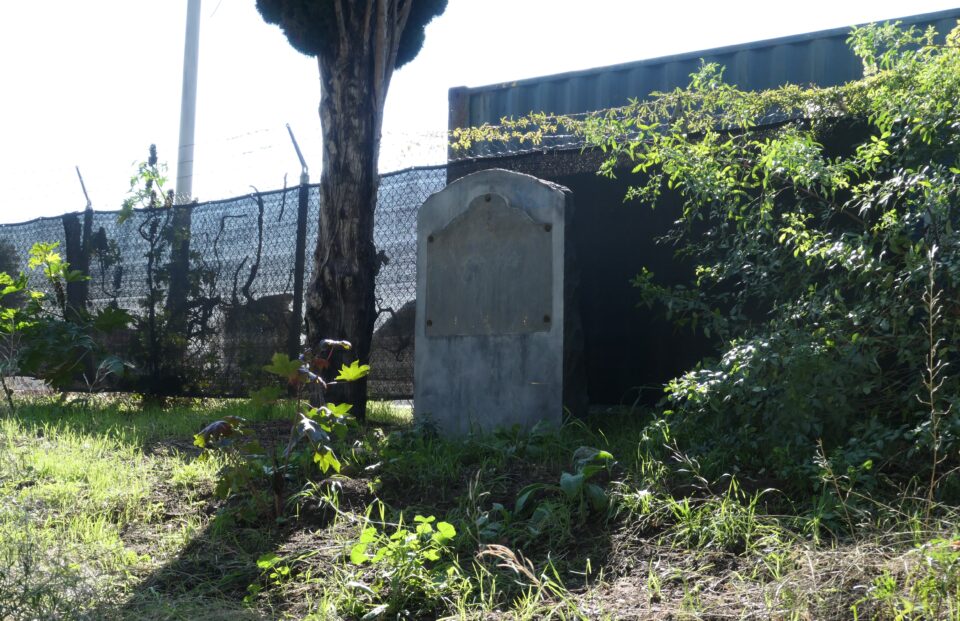
The inscription on the plaque that is no longer there was “The Hebrew Benevolent Society of Los Angeles (1854), first charitable organization in the city, acquired this site from the city council by deed of April 9, 1855. This purchase of a sacred burial ground represented the first organized community effort by the pioneer Jewish settlers.” It was erected in 1968 by California State Parks and the Jewish Federation Council of Los Angeles. On the internet, I found a photo someone took in 2021 of this place and the plaque was still in place. Its disappearance must be pretty recent.
The Hebrew Benevolent Society provided charity to both destitute Jews and Gentiles. After World War II, the organization became the Jewish Family Service of Los Angeles, as it is known today.
Our last Wandering Jew site to visit this day was the Wilshire Boulevard Temple, located in central LA, not far from Koreatown. Founded in 1862, it is the oldest Jewish congregation in Los Angeles. The impressive, huge dome topped building, was completed in 1929 and of all the religious architecture found in Los Angeles, it is the only one to be honored with a listing in the National Register of Historic Places.

We learned that tours inside the building are only by appointment, and when we looked to make an appointment on-line, all of January was already fully booked.
The several buildings of the synagogue grounds take up a whole city block, and what was interesting, was that outside the side of synagogue was a long line of people waiting with shopping bags and carts. Turned out that every Tuesday, and today was Tuesday, the Wilshire Boulevard Temple has a Food Bank and these were recipients waiting their turn to receive food. When the Hebrew Benevolent Society was founded in 1854, their purpose was to collect funds from “those who have” and distribute them to “those who have not,” Jew and non-Jew alike. Here, over 170 years later, the tradition of tikkun olam (action intended to improve the world) continues.

It was now getting late in the day, and we had made up to visit relatives for the evening. In our short time here in the city, we can only skim the surface of its many Jewish heritage sites. Today was a good beginning to see and learn a little about the LA Jewish experience. More to explore in LA tomorrow.
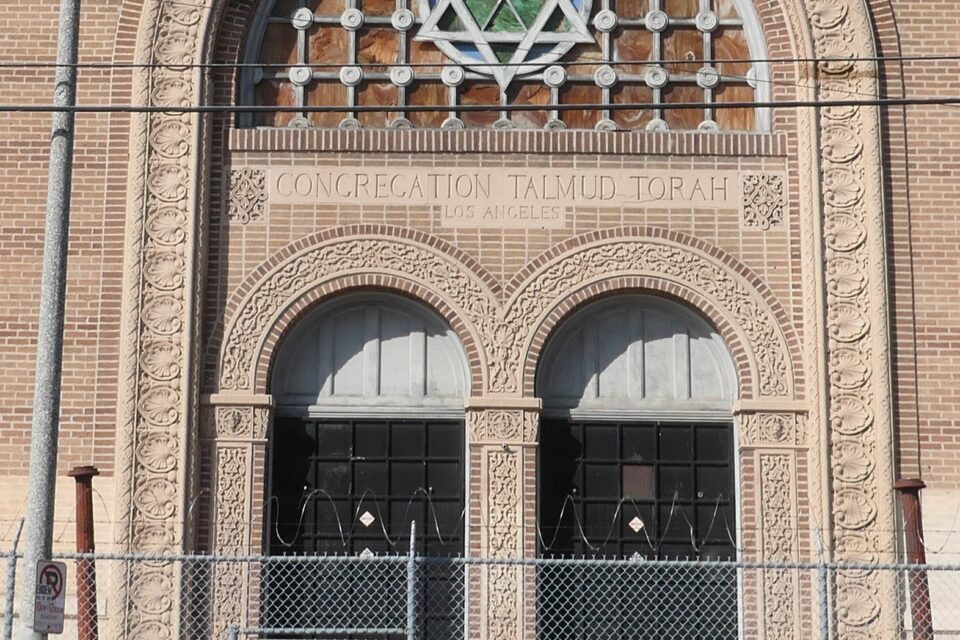
Very nice! Enjoy the rest of your trip!
wow I learnt so much!
very interesting!